Chicken farming
There are many benefits of raising chickens for the many
people who raise them. The main reason for raising chickens is that you can get
a regular supply of eggs. The chickens are healthier without touching the soil
as they are fed that is indicating here
The chickens can provide insect control, hunting coops be cleaned the are kept
When you get your baby chicks, it is not necessary this is needed experience,
Poultry farming for beginners
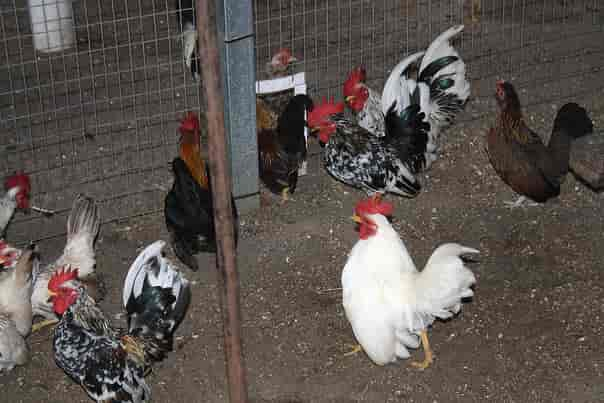 |
| Chicken farming |
When you start off raising chickens, there are several kinds that are available. Several breeds standout as they make an
excellent addition. One breed that is related of the is
called which are called chicken, type of Americana is a breed that
has fluffy feathers around its head. They lay blue eggs and are typically not
raised slaughter
Building a sturdy frame with open sides and top yields a
good coop for the younger chickens. Leaving a small hole on sides,
Chicken houses are a good investment because raising
chickens is an inexpensive way to provide fresh meat and eggs for the family.
Who doesn't like a fresh platter of fried chicken or scrambled eggs for
breakfast?
They are like any other creature in that they like good
shelter, a good supply feed to eat, and a feeling of safety and comfort. For most
of us who are not very handy when it comes to be wasted be purchased a couple of
Housing for chickens
If you want your Ware coop house to be already assembled consists of a high degree of
Another great source for your chicken house is Horizon
Structures, located horizonstructures
Another fine source is a firm called Sheds Unlimited, which
gives a good variety of choices for portable coop These structures are
designed are built are delivered USA .
The website for Sheds Unlimited displays a variety of
different and unique types and sizes of houses for chickens, sure to fit the
needs of any chicken entrepreneur or caretaker. They call their product Classic
Chicken Coops because of the uniqueness and quality of their work.
In conclusion, the quality and layout of these houses are
both the most important facets of a chicken house construction. Chickens know
what they want and a better chicken product is the result of
Poultry farming
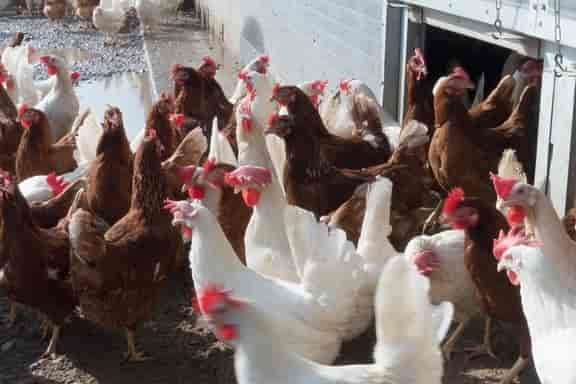 |
| Chicken farming |
When raising chickens, you must first decide whether you want
them for laying eggs, meat or for both purposes. This is because some chickens
are better means for one thing On the other hand, a
Three Egg Producers
Below are three egg producers for a coop setting:
Leghorns - These chickens are practically the best layers of
all the chickens. They lay white eggs that are large and the At times, these
Easter Eggers - These chickens do not conform to any one breed standard. They do, however, lay some unusually large and extra-large eggs in
colors ranging from blue to pink. They are friendly birds with a hardy nature.
Ideal for families with children. They are hardy in winter.
Chickens that are Meat Producers
Cornish Cross Chickens - These are a cross between White
Plymouth Rock and White Cornish Chickens and are the best meat producing
chickens there are. In just a short 8 to 12 weeks, they can weigh about 6 to 10
pounds.
Chickens that are both Egg and Meat Producers
Wyandottes - These chickens grow to about 7 to 8 pounds.
This is large enough for meat production. They also are dependable egg layers.
With them being hardy in nature
Poultry farming project
 |
| Chicken farming |
These are just some suggestions for types of chicken breeds
for chicken coops. There are many more you can explore. Just decide the use for
them before buying any of them to raise.
Many times people have said that there's no such thing as a
bad animal only a bad owner. Well, in most cases that is one hundred percent
true, as long as you factor in breed temperament of the animal. As with all
animals, chickens have some breeds that are better than others at being a
friendlier breed. Prospective owners should check into this if behavior is a
requirement for their flock. Most would say, "yes" it is a requirement;
especially if they want to safely interact
So what can you as an owner do to assure that you are
spending the time raising a friendly and safe hen/rooster, which you feel
comfortable being around?
Food
Any animal that is not being supplied with the proper
dietary needs and amounts of food will become nippy. This goes for chickens
too. Making sure that they have just the right amount of food will allow them
to be a much more relaxed chicken; as they won't have to fight for every scrape.
When they do nippy
Spending time with your hens from the moment you get them;
from newborn chick and up will stack the odds in your favor for having a much
friendlier chicken. They will get used to you. They will allow you to pet them,
to hold them, to perch on your arm, and hand. They will come to actually enjoy
Importance of poultry farming
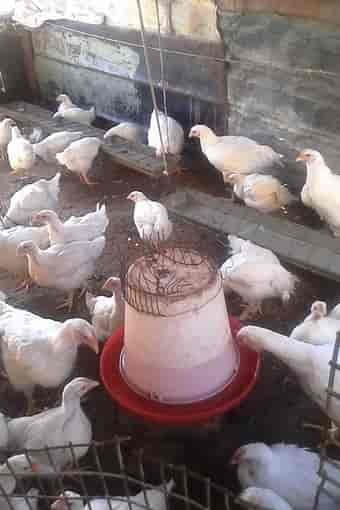 |
| Chicken farming |
As with human children, chickens are not immune to making
mistakes. They may nip by accident. They may try to treat you like another
flock member and fly at you scratching you with their claws. None of this
behavior has to be a sign of a vicious chicken. It can merely be a test of
their boundaries. A few simple breast and
chiding them or holding them. Believe it or not they can be taught step
Keeping your responsibility of these three needs, as their
flock caretaker, in mind can be all that is needed
Picking just the right time to order chicks from a hatchery
can be a life or death matter for those prospective hens. Here again, are why
there are positive things about doing research into making a successful
backyard chicken coop. The most important area that owners will see the benefit
in will be in the area of Any and all that they can reap the rewards of the produce,
whether it is for eggs or meat. The best place to start is in knowing when it
is okay to order those chicks.
Small poultry farm
When figuring out the best time, season, in some cases delivery as most
of the packages temperature is made
Knowing what a new chick needs to make a successful
transition from chick-hood into mature hen will be a plus when ordering. A
chick's main requirement is temperature. They thrive best in a temperature
setting of 95 degrees. In most cases a hatchery will not process an order
unless it is a multiple order for the reasons what will be gained
But what about the hotter summer temperatures? Well, much
like anything, too much of a good thing can translate into dead chicks. Ninety
degree plus temperatures for shipping, when considering the added body
temperatures of more than in this
instance are really markedly lowered
So given the fact that a prospective flock owner's wish is
for a successful chick delivery, most will consider early spring as the best
time for ordering chicks. Usually farmers will time it when it is consistently
30 plus to the inclusion of
As more and more hatchery sites are now offering year-round
delivery it is more important, than ever that prospective flock owners gauge the
most successful time to order for themselves. This will help them avoid having
a delivery end up in more dead chicks than live.
Poultry farming profit
There are many reasons that a prospective farmer may be
raising It may be that It may be that
Successfully raising chicks requires a specific environment
that the flock owner will need to provide in order be raised be set the arrival of consist of don't need to extremely quite
Raising baby chickens
Affordable Brooder Ideas
• Cardboard boxes
• Old rabbit cages
• Plastic storage bins
Bedding Materials
Once you have the brooder enclosure picked out, you must
fill it with bedding. There are many things that you can use for
bedding too that don't have to cost you a lot of money, such as
• Pine shavings or sawdust (but watch to make sure they
aren't ingested by the chicks)
• Hay
• Or ideally sand. Sand works the best as it makes for
easier cleanup and allows them to practice in a more natural environment their
scratching and pecking.
You should, however, avoid paper towels on the bottom of your
container; especially containers like plastic ones that have slippery
floors, as this can be bad for their growing legs and cause a condition where
their legs become disjointed.
Heat
• A Heat lamp - These can be purchased at any of your local
hardware or feed stores. Caution should be used to make sure you get an actual
heat lamp and light as buying the wrong type can be a fire hazard.
• Thermometer -These too, can be found at your local
hardware store or feed store.
Achieving that perfect temperature can be done by the means
of the use of the heat lamp being raised and lowered based upon the thermometer
reading. The thermometer you can either hang or adhere with some sort of
adhesive material to the inside wall of your brooder. Using one that lies on
the floor, while okay, opens you to thermometer fights with the chicks; as they
see this as a toy for them and to be honest are not very selective as to where
they poop.
Water And Food
Ideally, a small chicken water jar can be purchased from any
hardware store for use in your brooder, along with a small feeding dish. The
smaller the better for the water container, as chicks have a tendency to risk drowning in too much water. Some say that putting marbles in the water
can help with this issue too. Raising the water jar and the food container up
by some means, either by a small board or some other object can help to keep
bedding material out of their food and water dishes.
Poultry care and management
A few small steps in preparing just the right environment
can make all the difference in the success of raising chicks to become healthy
mature hens.
How well any animal or human grows is truly determined by
what they eat and how they start out. In the area of being foster caretakers
for hatchery chicks it is truly essential that their human caretakers meet
their dietary needs; as it can be a matter of life and death. Knowing the
dietary steps to take in advance can be very helpful. When chicks first hatch
they have a yolk sack that they absorb from the egg that they hatch from, which
will keep them fed for the first few days.
Essential Food Supply Needs to Have On Hand
• Specially sized water feeder
• Specially sized food feeder
• Sugar or Save A Chick Electrolyte
• Scrambled or hard-boiled eggs to mash
• Yogurt
• Medicated Chick feed
• Other random protein items to offer
When you first receive your chicks in the mail, they have had
a long and stressful trip to make it to your doorstep. There are some special
procedures that you can follow to help them get over the stress of shipment. As
soon as you receive them have their water feeder filled with water, but make
sure you add a little sugar or SACE (Save A Chick Electrolyte) to that
water. Then, as you're taking them out of the packaging, take each one and
individually dip their beak into the water mixture until they drink. This will
help them get over the shock of transportation and lessen the likelihood that
you lose some because of shipment shock.
Along with having their water all set with some sugar or
SACE in it, have a small chick-sized feeder ready with some
medicated chick feed in it. This will give them the medicine that they may need
to get them over the phase of being susceptible to all the chick related
diseases they may catch. They will most probably be on this feed until they are
almost ready to graduate to the regular coop, about 12 weeks. Many people have
issues with feeding animals any medicated feeds at all, that's fine, the
decision is yours whether to use medicated feed or not . There are other
alternatives out there, natural ones. It will simply take some research on your
part to find a natural version of this to feed your chicks with.
How to take care of baby chickens
Between the ages of newly hatch and twelve weeks these new
hatchery chicks will do a tremendous amount of growing. This will make
their diet require a tremendous amount of protein to help their proper growth
and to aid their newly growing digestive system. Their first foray into natural
food could be as simple as mashed up eggs on the first day they arrive. Many
use this method of giving their chicks' protein as it is very well received by
the newly hatched chick, more so than the grain; which they may take some time
to get used to. So try them out on this and you'll be surprised by how well
it's received. Other good protein sources to cut up into small bite-sized
portions or mash for them could be something like hotdogs, or any form of
sandwich meat.
Yogurt is another good addition that you can try for their
newborn diet. Yogurt is a pro-biotic, so, therefore, helps your new chicks keep a
healthy gut and avert all sorts of young chick diseases that they may catch.
These are just a few of the natural food options that owners can choose from
for growing healthy chicks; There are many more options just waiting out there
for you to discover them.
Chickens stopped laying suddenly
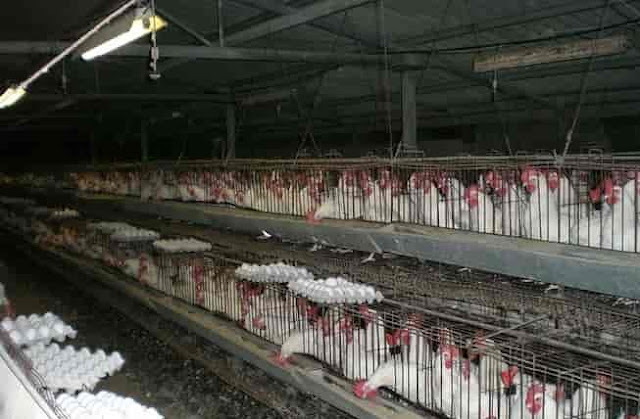 |
| Chicken farming |
You made the plunge into starting your cost-effective
chicken coops. You have the perfectly designed coop , almost a coop-condo. The
chicken pasture is field-fenced and electrified for deterring predators.
Everything is going perfectly, your hens are even laying... and then... they
slow down or stop all together laying eggs. What's wrong?
There are as many things that could cause your chickens
to stop laying as there have been articles written about it. But there are a
few common issues to look at first. Here are a few:
• Predators are eating the eggs, most commonly rats.
• Molting may be the issue some hens won't lay when molting.
• Disrupted coop, a happy coop makes lots of eggs.
• Season, temperature plays a role in how many eggs are
laid .
• Disease, some diseases will translate into fewer eggs.
• Age, older hens will taper off or stop all together laying
eggs.
Rats are one of the number one predators that love to get
into a chicken coop. The thrill to roll those precious eggs of to feed their
young. It can be quite a daunting task to get rid of them.
At approximately one year of age, it is normal for chickens
to lose their feathers and then grow in new feathers. This is called molting.
At this time, laying may become sporadic.
Too many roosters in the coop or some other discord between
coop-mates can disrupt laying. Not only will arguments among your many roosters
upset the hens, but they can become more vicious with the hens causing harm.
It's not unheard of for a rooster anxious to steal another hen away from a male
to grab her by the scruff of the neck and fling her around.
But don't rule out disease or the overall age of your hen
when evaluating why your chickens have stopped laying. Just like any other
animal hens can have health issues as well . Everything from viruses to skin
conditions to problems with their inner workings. It is tremendously hard on
them physically when laying those larger eggs.
These are just a few of the existing issues that a new
chicken farmer may want to investigate when their hens aren't laying well. When
egg production falls off, as with any problem, it is always best to
step-by-step evaluate the most probable issues first. Eliminating these common
issues one-by-one will help you find the problem in a cost-effective way.
For more exotic pets, update please click here.




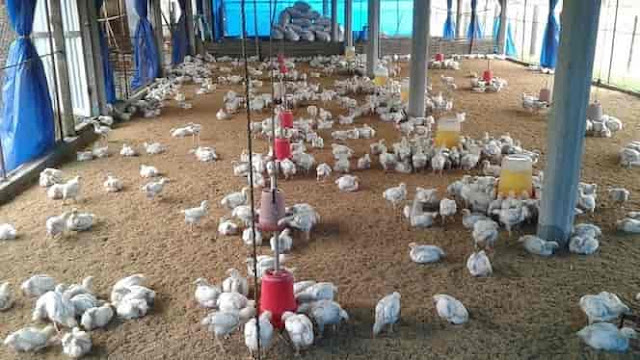
0 comments:
New comments are not allowed.